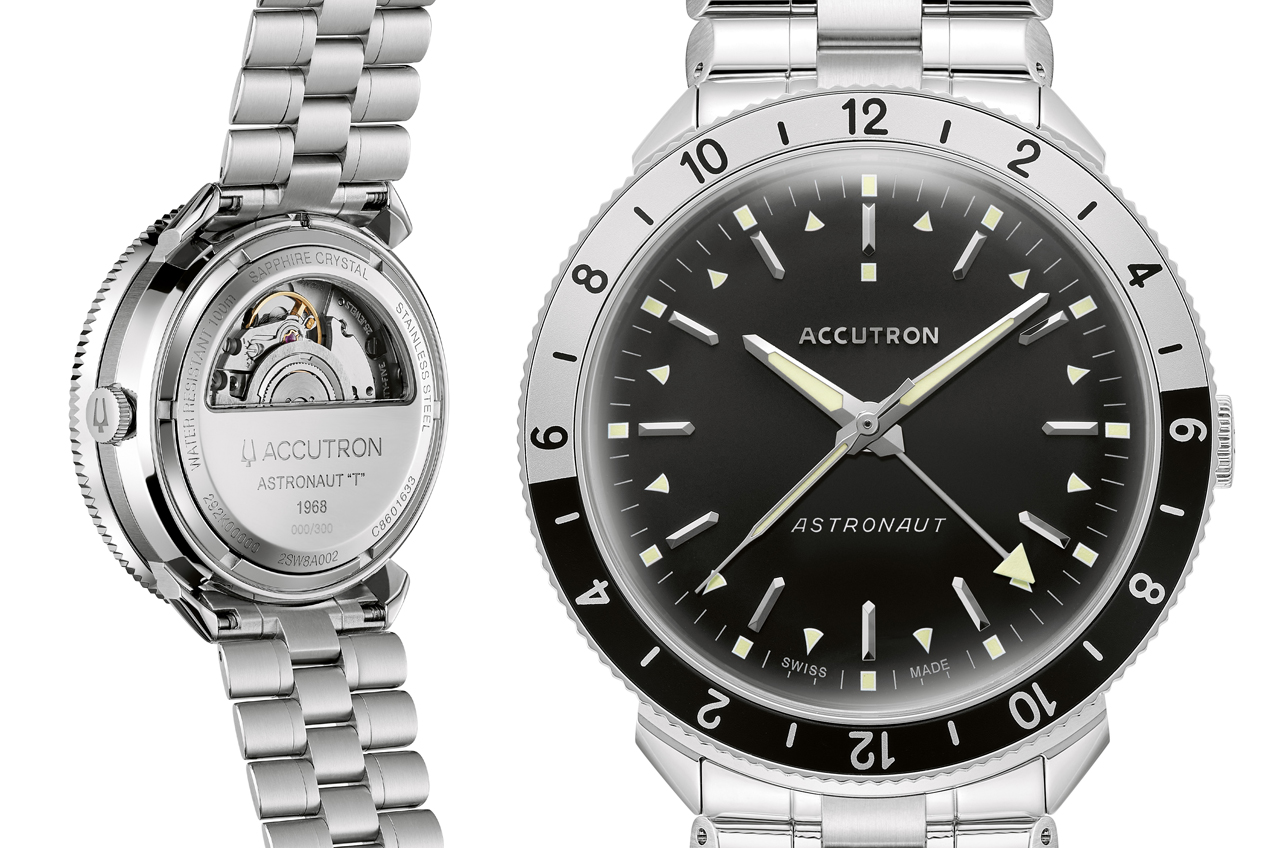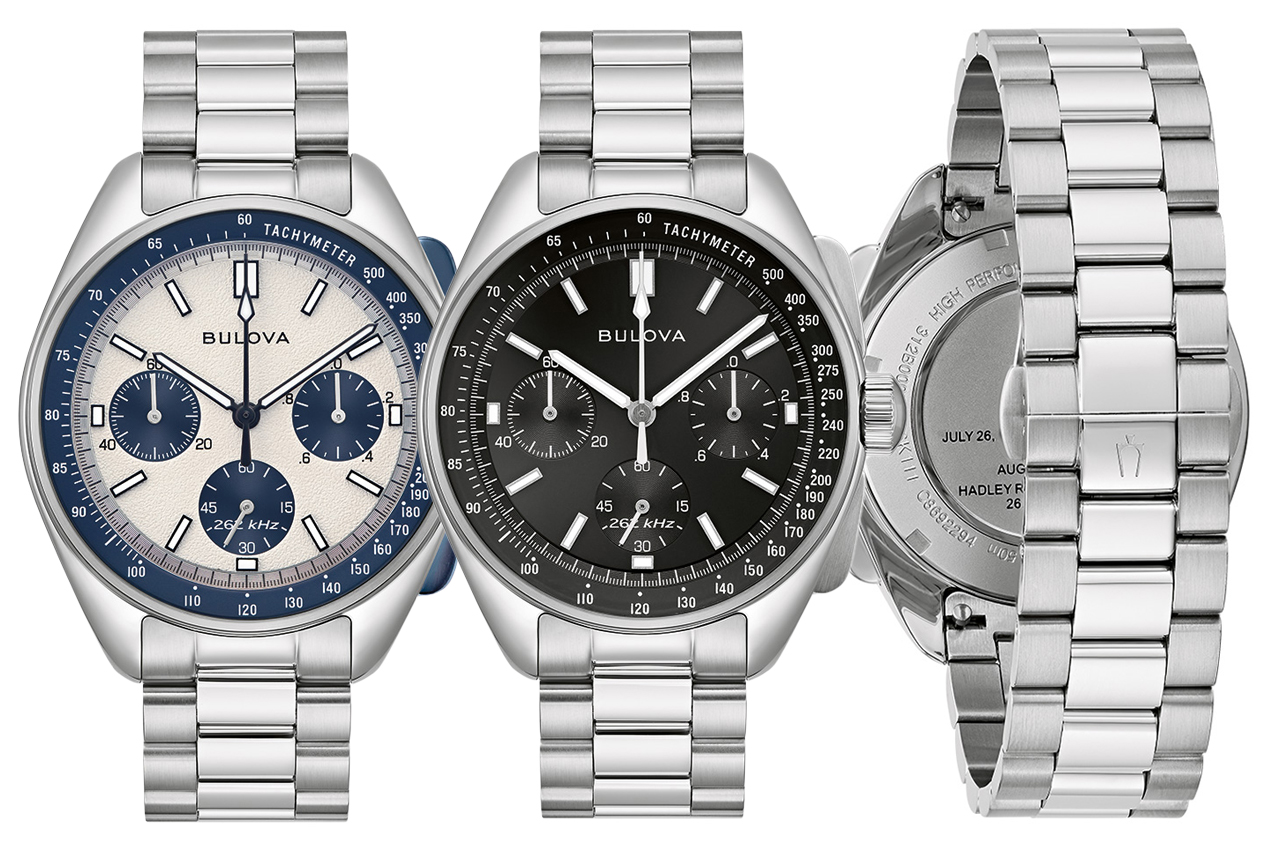Accutron and Bulova debut new Astronaut and Lunar Pilot timepieces
Both releases commemorate the brands' roles in providing timers and timing devices for the U.S. space program.

Two watch brands are turning back the clock to celebrate the historic associations they had with the U.S. space program.
Accutron is reviving its iconic "Astronaut" line with the introduction of the Accutron Astronaut "T" 2023 edition, while Bulova is continuing its "Lunar Pilot" series, which is based on a watch once worn on the moon. Both brands have been part of the Citizen Watch Company since 2008.
The Accutron Astronaut, which first launched with Gordon Cooper on the final Mercury mission in 1963, and Bulova, which sent a prototype chronograph to the moon with Apollo 15 commander David Scott in 1971, both have long histories providing the space program with timers and timing devices for use on NASA's earliest satellites and human spacecraft.
The fully electronic Accutron Astronaut was the first American-made watch to fly into space, while Bulova Accutron clocks were part of the instrument panels on Gemini capsules. Bulova Accutron tuning forks were used to "slice" starlight into scanning patterns for the Apollo navigation system, and Bulova Accutron timers helped control the science experiments left behind by the astronauts on the moon.
Related: The Apollo Program: How NASA sent astronauts to the moon

"There is no denying the outstanding history of both Accutron and Bulova with the U.S. space program," Jeffrey Cohen, president of Citizen Watch America, said in a statement. "The significance of the relationship and specifically the tuning fork technology led to the creation of the Accutron brand as the standalone brand it is today."
Rather than use a balance wheel mechanism as almost all timepieces before it, the Accutron was the first to successfully employ a battery-driven tuning fork that delivered more accurate time keeping. With its high frequency, it could withstand high G-acceleration and the extreme temperatures associated with high-altitude flights. As such, the Accutron Astronaut became the U.S. Air Force's choice for its pilots flying the X-15 experimental rocket plane.
Breaking space news, the latest updates on rocket launches, skywatching events and more!

In celebration of its space history and as the first in a new series, Accutron has created its new Astronaut model based on the 1968 "T" version. The 2023 edition, which is limited to only 300 pieces and retails for $3,500 each, is Swiss made and features a 41mm stainless steel body and a partial exhibition case back to view the internal movement. The dial is fitted with Super-LumiNova hands and markers to enhance its function in low light, and the watch brings back the Day/Night bezel as was part of the original vintage design.
The new Astronaut forgoes the tuning fork mechanism that made it famous, instead using a more modern Swiss Sellita GMT mechanical movement.

Bulova is also continuing to build upon its "Archive" series with two new models of the Lunar Pilot, a chronograph based on the prototype it secretly flew to the moon on Apollo 15. The watch became only the second brand to be worn on the lunar surface, after the crystal on David Scott's NASA-issued Omega Speedmaster was lost during a prior outing.
The authentic Apollo 15-flown Bulova chronograph sold for $1.6 million at a 2015 auction, which led to the company producing new models. The latest "Lunar Pilot" watches, which cost $895 each, are the first to replicate the exact size (43.5mm) of the moon-flown watch and come in two colors — one with a two-tone blue and white dial and the other in classic black, representing the original.
For more information about the 2023 edition Astronaut or Lunar Pilot watches, see the listings on Bulova's website.
Follow collectSPACE.com on Facebook and on Twitter at @collectSPACE. Copyright 2023 collectSPACE.com. All rights reserved.

Robert Pearlman is a space historian, journalist and the founder and editor of collectSPACE.com, a daily news publication and community devoted to space history with a particular focus on how and where space exploration intersects with pop culture. Pearlman is also a contributing writer for Space.com and co-author of "Space Stations: The Art, Science, and Reality of Working in Space” published by Smithsonian Books in 2018.
In 2009, he was inducted into the U.S. Space Camp Hall of Fame in Huntsville, Alabama. In 2021, he was honored by the American Astronautical Society with the Ordway Award for Sustained Excellence in Spaceflight History. In 2023, the National Space Club Florida Committee recognized Pearlman with the Kolcum News and Communications Award for excellence in telling the space story along the Space Coast and throughout the world.

